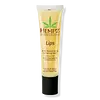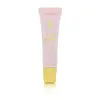What's inside
What's inside
 Key Ingredients
Key Ingredients

 Benefits
Benefits

 Concerns
Concerns

 Ingredients Side-by-side
Ingredients Side-by-side

Petrolatum
EmollientEthylhexyl Methoxycinnamate
UV AbsorberCetyl Alcohol
EmollientOzokerite
Emulsion StabilisingCaprylic/Capric Triglyceride
MaskingDimethicone
EmollientButyl Methoxydibenzoylmethane
UV AbsorberEthylhexyl Salicylate
UV AbsorberPolyester-8
Skin ConditioningAroma
Cannabis Sativa Seed Oil
EmollientButyrospermum Parkii Butter
Skin ConditioningHelianthus Annuus Seed Oil
EmollientEuterpe Oleracea Fruit Extract
Citrus Limon Peel Extract
EmollientCarthamus Tinctorius Seed Oil
MaskingLycium Barbarum Fruit Extract
AstringentAnthemis Nobilis Flower Extract
MaskingCitrus Aurantium Dulcis Peel Extract
Emulsion StabilisingMangifera Indica Fruit Extract
Skin ConditioningLimonene
PerfumingTocopherol
AntioxidantGlycine Soja Oil
EmollientStevioside
MaskingTocopheryl Acetate
AntioxidantCitral
PerfumingBHT
AntioxidantBenzyl Benzoate
AntimicrobialSqualane
EmollientGlycerin
HumectantRetinyl Palmitate
Skin ConditioningCitric Acid
BufferingPetrolatum, Ethylhexyl Methoxycinnamate, Cetyl Alcohol, Ozokerite, Caprylic/Capric Triglyceride, Dimethicone, Butyl Methoxydibenzoylmethane, Ethylhexyl Salicylate, Polyester-8, Aroma, Cannabis Sativa Seed Oil, Butyrospermum Parkii Butter, Helianthus Annuus Seed Oil, Euterpe Oleracea Fruit Extract, Citrus Limon Peel Extract, Carthamus Tinctorius Seed Oil, Lycium Barbarum Fruit Extract, Anthemis Nobilis Flower Extract, Citrus Aurantium Dulcis Peel Extract, Mangifera Indica Fruit Extract, Limonene, Tocopherol, Glycine Soja Oil, Stevioside, Tocopheryl Acetate, Citral, BHT, Benzyl Benzoate, Squalane, Glycerin, Retinyl Palmitate, Citric Acid
Ethylhexyl Methoxycinnamate 7.5%
UV AbsorberBenzophenone-3 2%
UV AbsorberZinc Oxide 3%
Cosmetic ColorantPolybutene
Paraffinum Liquidum
EmollientOctyldodecanol
EmollientDiisostearyl Malate
EmollientBis-Diglyceryl Polyacyladipate-2
EmollientCaprylic/Capric Triglyceride
MaskingSilica Dimethyl Silylate
EmollientBeeswax
Emulsion StabilisingVp/Hexadecene Copolymer
Triacontanyl Pvp
HumectantMethyl Methacrylate Crosspolymer
Phytosteryl Macadamiate
Skin ConditioningButylene/Ethylene/Styrene Copolymer
Ethylene/Propylene/Styrene Copolymer
Phenoxyethanol
PreservativeSorbic Acid
PreservativeButyrospermum Parkii Butter
Skin ConditioningAroma
Sodium Saccharin
MaskingTocopheryl Acetate
AntioxidantHexadecene
SolventTocopherol
AntioxidantSilica
AbrasiveTin Oxide
AbrasiveMica
Cosmetic ColorantCI 75470
Cosmetic ColorantIron Oxides
CI 77492
Cosmetic ColorantCI 77499
Cosmetic ColorantCI 15850
Cosmetic ColorantCI 73360
Cosmetic ColorantTitanium Dioxide
Cosmetic ColorantCI 19140
Cosmetic ColorantEthylhexyl Methoxycinnamate 7.5%, Benzophenone-3 2%, Zinc Oxide 3%, Polybutene, Paraffinum Liquidum, Octyldodecanol, Diisostearyl Malate, Bis-Diglyceryl Polyacyladipate-2, Caprylic/Capric Triglyceride, Silica Dimethyl Silylate, Beeswax, Vp/Hexadecene Copolymer, Triacontanyl Pvp, Methyl Methacrylate Crosspolymer, Phytosteryl Macadamiate, Butylene/Ethylene/Styrene Copolymer, Ethylene/Propylene/Styrene Copolymer, Phenoxyethanol, Sorbic Acid, Butyrospermum Parkii Butter, Aroma, Sodium Saccharin, Tocopheryl Acetate, Hexadecene, Tocopherol, Silica, Tin Oxide, Mica, CI 75470, Iron Oxides, CI 77492, CI 77499, CI 15850, CI 73360, Titanium Dioxide, CI 19140
Ingredients Explained
These ingredients are found in both products.
Ingredients higher up in an ingredient list are typically present in a larger amount.
Aroma refers to an ingredient, or mixture of ingredients, that impart or mask a flavor.
The name is slightly confusing. This is because INCI associates aroma with flavor instead of smell.
Here is the official definition from the The International Cosmetic Ingredient Dictionary and Handbook:
“Aroma is a term for ingredient labeling used to identify that a product contains a material or combination of materials normally added to a cosmetic to produce or to mask a particular flavor.”
INCI shows the only purpose of aroma to be "flavouring".
However, due to regulation differences, some companies may use aroma in place of parfum.
In Canada, this ingredient only has to be listed in concentrations above 1%.
Learn more about AromaThis ingredient is also known as shea butter. It is an effective skin hydrator and emollient.
Emollients help soothe and soften your skin. It does this by creating a protective film on your skin. This barrier helps trap moisture and keeps your skin hydrated. Emollients may be effective at treating dry or itchy skin.
Shea butter is rich in antioxidants. Antioxidants help fight free-radicals, or molecules that may harm the body. It is also full of fatty acids including stearic acid and linoleic acid. These acids help replenish the skin and keep skin moisturized.
While Shea Butter has an SPF rating of about 3-4, it is not a sunscreen replacement.
Shea butter may not be fungal acne safe. We recommend speaking with a professional if you have any concerns.
Learn more about Butyrospermum Parkii ButterThis ingredient is an emollient, solvent, and texture enhancer. It is considered a skin-softener by helping the skin prevent moisture loss.
It helps thicken a product's formula and makes it easier to spread by dissolving clumping compounds.
Caprylic Triglyceride is made by combining glycerin with coconut oil, forming a clear liquid.
While there is an assumption Caprylic Triglyceride can clog pores due to it being derived from coconut oil, there is no research supporting this.
Learn more about Caprylic/Capric TriglycerideEthylhexyl Methoxycinnamate is an organic compound that provides UVB protection. It often goes by the more common name of octinoxate. It is created from methoxycinnamic acid and 2-ethylhexanol.
Ethylhexyl Methoxycinnamate absorbs UVB rays with wavelengths between 280-320 nm. UV absorbers protect your skin by using chemical reactions to convert UV rays into heat and energy.
UVB (290-320 nm) rays emit more energy than UVA rays. They are capable of damaging DNA, causing sunburns and are thought to be linked to skin cancer.
The state of Hawaii has banned sunscreens containing octinoxate due to its potential impact on coral reefs. More research is needed to bridge gaps in this research. The European Union allows higher levels of octinoxate in sunscreens than the US and Australia.
Ethylhexyl Methoxycinnamate is oil soluble. It is not stable and may lose efficacy when exposed to sunlight.
Learn more about Ethylhexyl MethoxycinnamateTocopherol (also known as Vitamin E) is a common antioxidant used to help protect the skin from free-radicals and strengthen the skin barrier. It's also fat soluble - this means our skin is great at absorbing it.
Vitamin E also helps keep your natural skin lipids healthy. Your lipid skin barrier naturally consists of lipids, ceramides, and fatty acids. Vitamin E offers extra protection for your skin’s lipid barrier, keeping your skin healthy and nourished.
Another benefit is a bit of UV protection. Vitamin E helps reduce the damage caused by UVB rays. (It should not replace your sunscreen). Combining it with Vitamin C can decrease sunburned cells and hyperpigmentation after UV exposure.
You might have noticed Vitamin E + C often paired together. This is because it is great at stabilizing Vitamin C. Using the two together helps increase the effectiveness of both ingredients.
There are often claims that Vitamin E can reduce/prevent scarring, but these claims haven't been confirmed by scientific research.
Learn more about TocopherolTocopheryl Acetate is AKA Vitamin E. It is an antioxidant and protects your skin from free radicals. Free radicals damage the skin by breaking down collagen.
One study found using Tocopheryl Acetate with Vitamin C decreased the number of sunburned cells.
Tocopheryl Acetate is commonly found in both skincare and dietary supplements.
Learn more about Tocopheryl Acetate